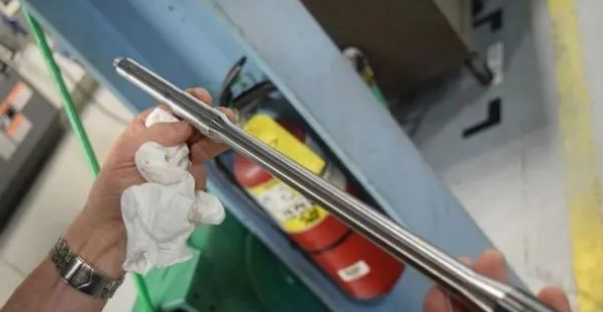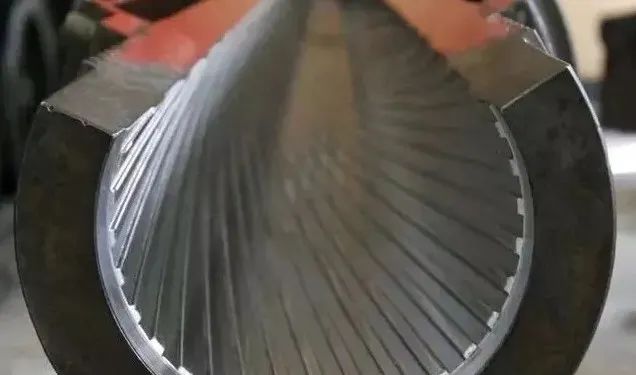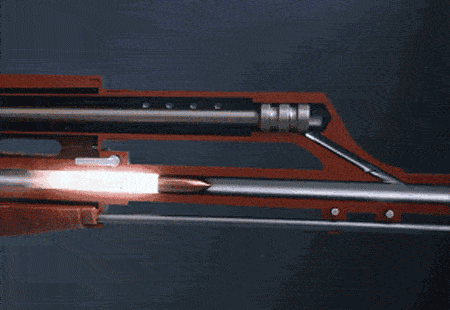The barrel is one of the core parts of a firearm, and it is usually made of a heat-resistant metal tube that is not easily deformed. When the bullet is fired, the expanding gases from the powder explosion propel the bullet through the barrel and out of the gun at high velocity.
In ancient times, gun barrels were cast. At that time, people thought that casting was the best method, but they soon discovered that the barrels of casted guns were generally too thick and the gun head was heavy, which would seriously affect the accuracy of the gun when shooting. Moreover, when the casting process is cooling, it is very easy to generate air bubbles, and it is difficult to make the surface of the inner bore of the barrel smooth.
As an important part of a firearm, the barrel is also the part with the worst working environment and the highest mechanical performance requirements, and it often works under high temperature and high pressure environment. Under such conditions, the structural strength requirements for the barrel are very strict. If the quality is not up to standard, it will not only affect the accuracy of shooting, but also may cause the bomb to explode. The quality of a barrel directly affects the service life and performance of the gun, so the processing technology of the barrel has become particularly important.
When a gun is fired, the inside of the barrel must withstand a pressure of several hundred megapascals, which is equivalent to several thousand atmospheres. That is to say, inside the barrel, every square centimeter bears thousands of kilograms of pressure. The chamber pressure of domestic small-caliber rifle bullets is about 280-290 MPa, while the chamber pressure of NATO small-caliber rifle bullets must reach more than 350 MPa.
The iron rod used for the barrel is not an ordinary iron rod, it is called a barrel blank. The gun billet is cast in the steel factory, and then cut into an alloy rod by a machine tool, then it can be transported to the gun factory. The gun factory processes the alloy rod into the designed shape according to the gun type produced, and then starts drilling. At this time, the alloy The rod becomes a “seamless steel pipe”, followed by the core technology of making a gun – drawing the rifling, and finally finishing the paint, and a barrel is born.
The materials needed to manufacture high-quality alloy gun blanks are difficult to obtain. The first batch of 200 Hanyang-made guns produced by the Hanyang Arsenal in 1890 were imported from Japan at a high price; the Russian high-precision sniper rifle T5000 used The gun blanks are imported from the United States. (The ORSIS rifle company that produces T5000 is a private enterprise, so it is not restricted by Western countries)
After the firearms entered the era of rifling and standardization of the caliber, the interior of the barrel became very complicated, and the energy release of the propellant of the bullet also doubled (the propellant of the modern bullet is the double-based propellant of nitrocellulose + nitroglycerin) ), which requires the barrel to have very high strength (hardness and toughness), and it is basically impossible to manufacture a qualified barrel by casting.

Gun barrels cannot be manufactured using conventional casting methods, because conventional casting methods use molds to pour them out, and the guns made in this way are relatively poor in hardness and toughness, so the gun barrels must be cold forged in order to ensure quality to manufacture.
Cold forging is generally drilled out with a drill. The barrel manufactured by this technology can withstand the huge impact generated by continuous shooting, which can better ensure the accuracy of shooting. Cold forging technology is a huge technological advancement for the safety and shooting accuracy of firearms, and it is precisely for this reason that cold forging technology is widely used in the manufacture of gun barrels in countries all over the world.
At present, the barrels of most assault rifles, light machine guns and pistols are struck by cold forging machines. The appearance of this device is unremarkable, but the technical level is very high, and it needs very good control. The beating and rotation must be even and synchronized. If the speed of the hammer head is inconsistent, the barrel will be deformed and the shape will not be a regular circle.
The production process of the gun barrel: the gun billet is cast and forged into a bar in a steel factory, the internal pores are removed, and then sent to the arsenal for subsequent processing. After the arsenal receives the steel bar, it is cut into sections, the skin with many defects is removed, and then a through hole is drilled in the center of the steel bar with a deep hole drill.
Then use a steel inner core with the same texture as the rifling to pass through, and then clamp one end on the chuck of the cold forging machine. The hammer heads made of four brass are evenly rotated under the slow rotation of the chuck of the cold forging machine. Beat the blank to make it elongated. Finally, the barrel also needs to be polished and polished on the inner and outer surfaces, and chrome-plated and other surface treatments are required to meet the requirements for use.
The barrel processed in this way not only has a smooth inner wall, uniform size, and uniform rifling, but also has extremely high overall mechanical strength and surface hardness, and proper surface roughness and rifling depth twist can fully control the rotation and shooting direction of the bullet. , to improve shooting accuracy.

In short, modern firearms manufacturing seems to be simple, but in fact it needs a complete large-scale industrial base to support it. The countries in the world that can manufacture firearms are still a few industrial powers, and the manufacturers are all well-known enterprises with a history of one hundred years. Other countries want large-scale It takes a long process to manufacture firearms with stable performance and high quality, especially the craftsman spirit we often say.


